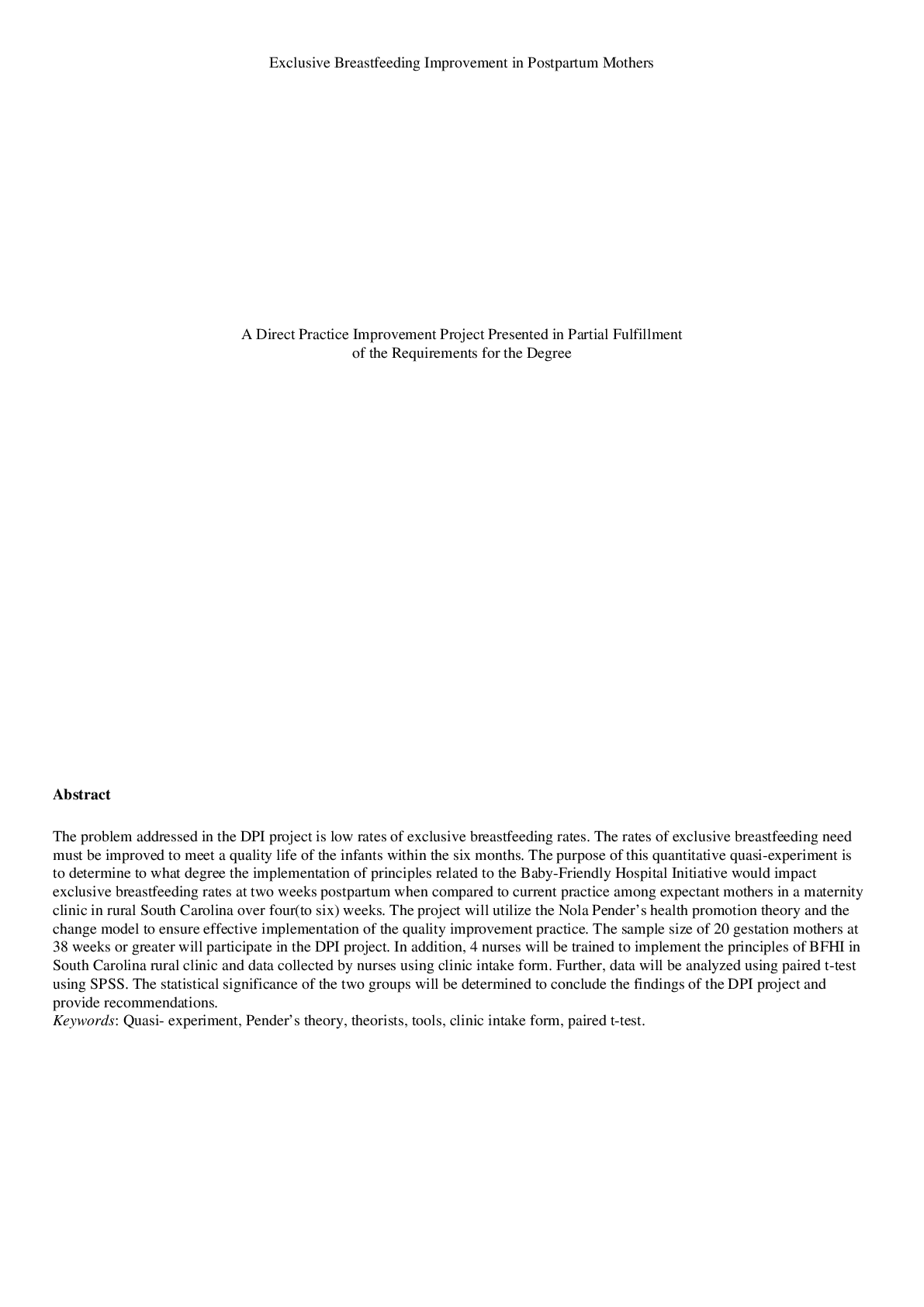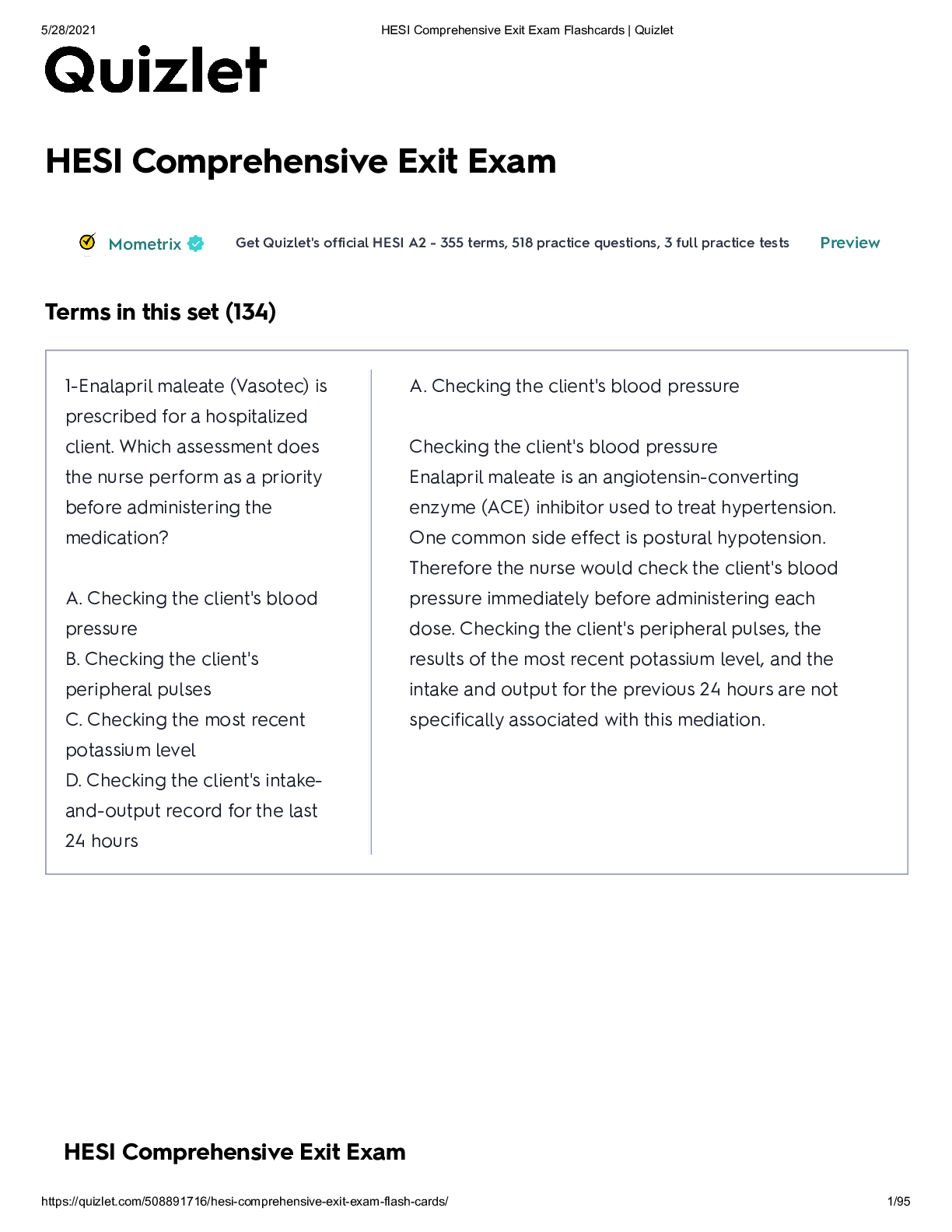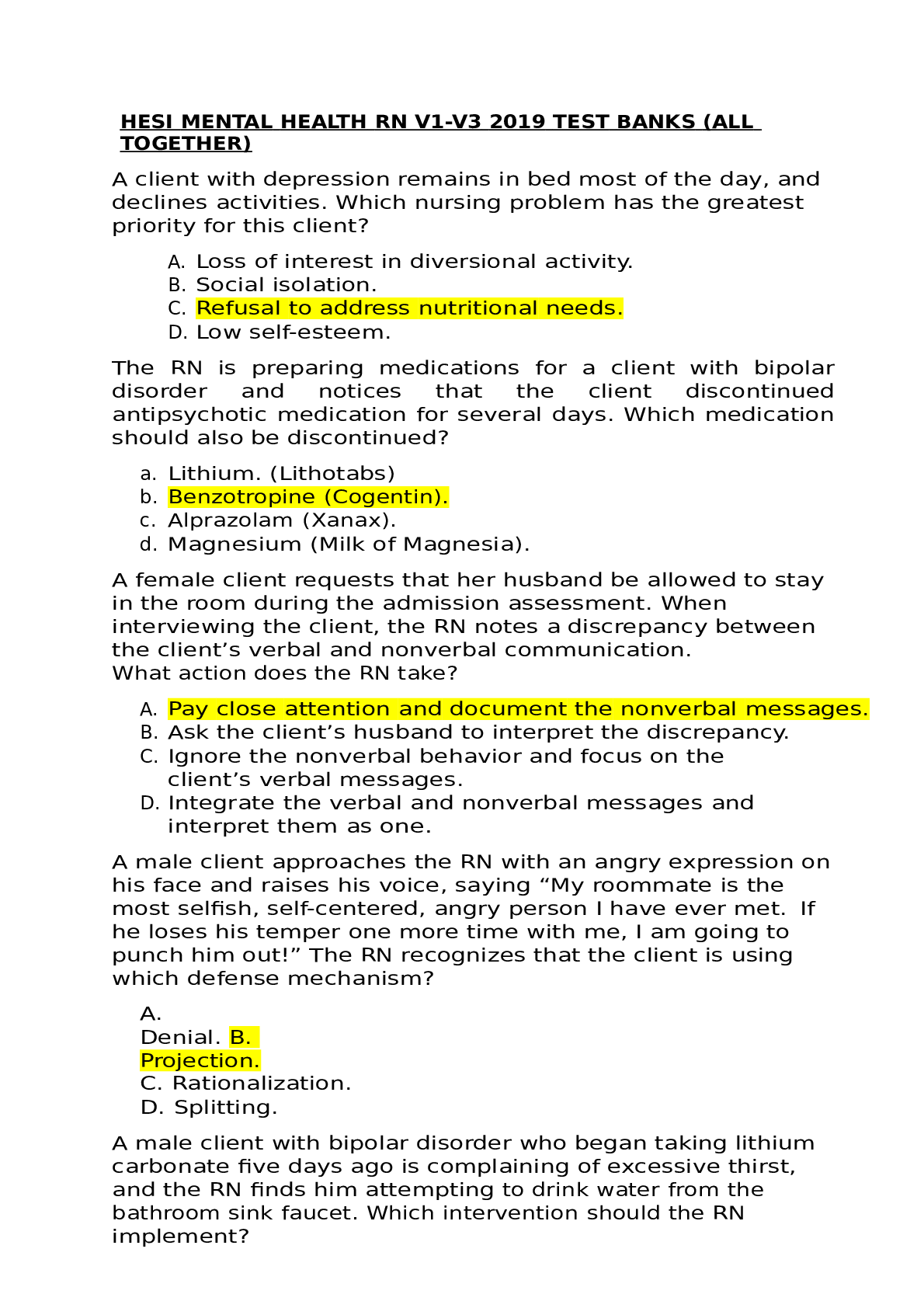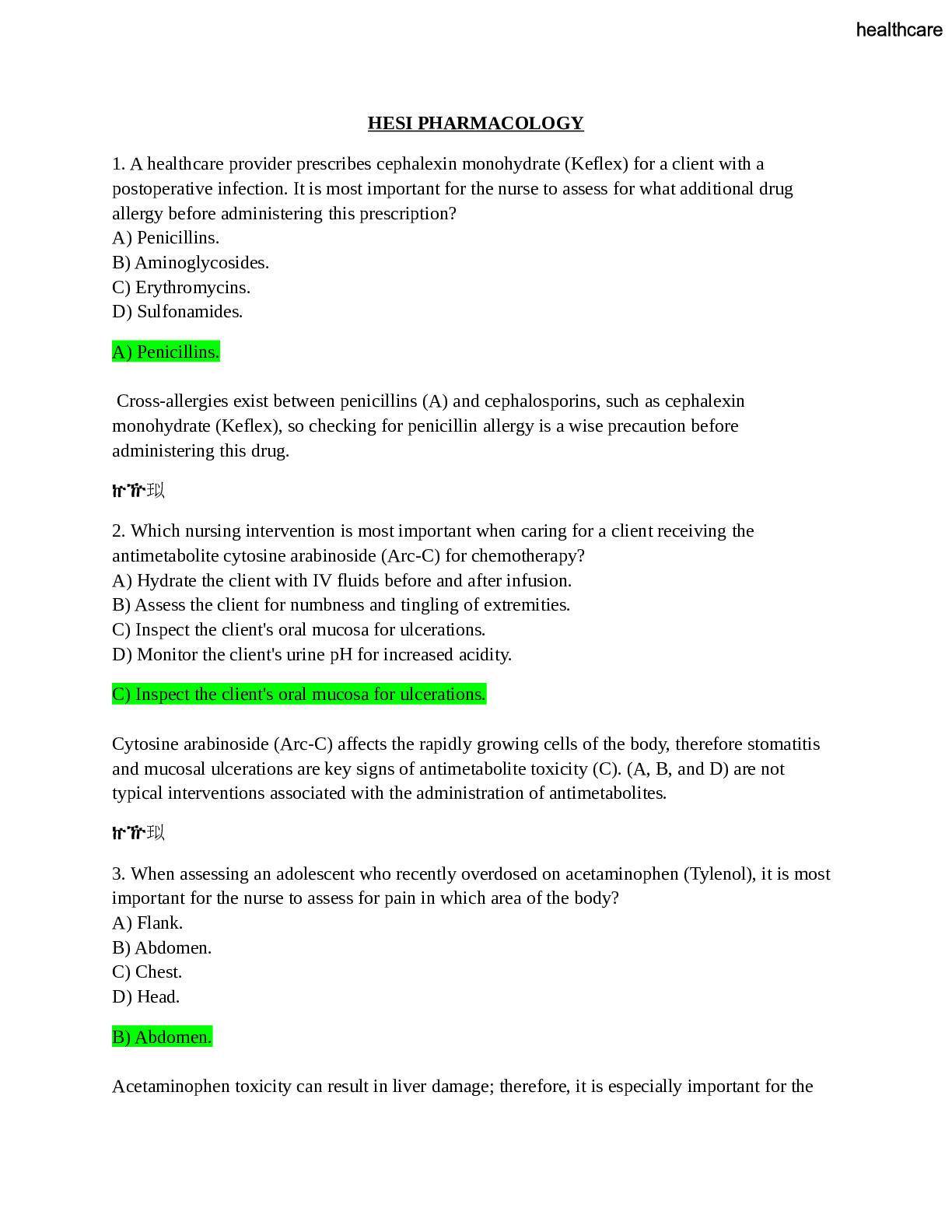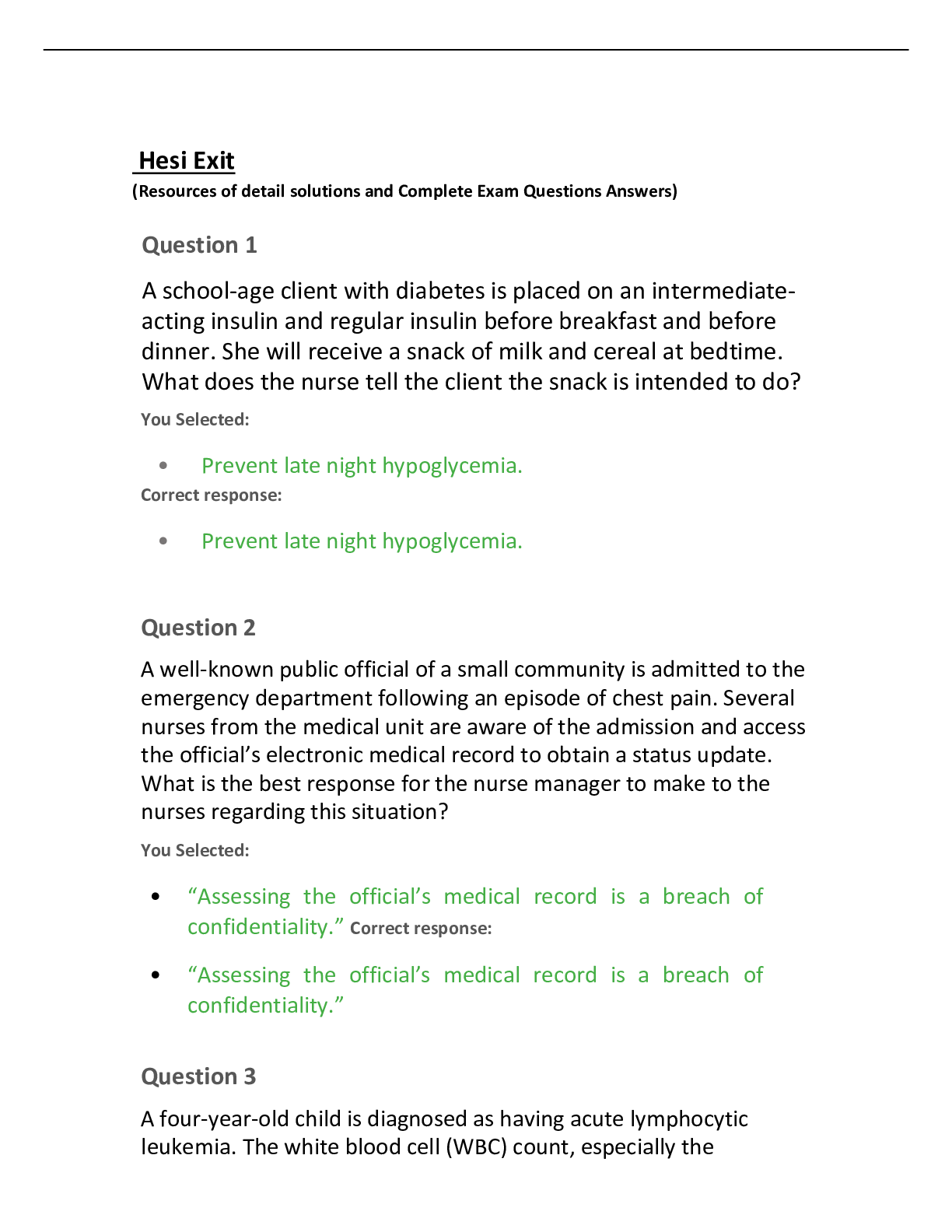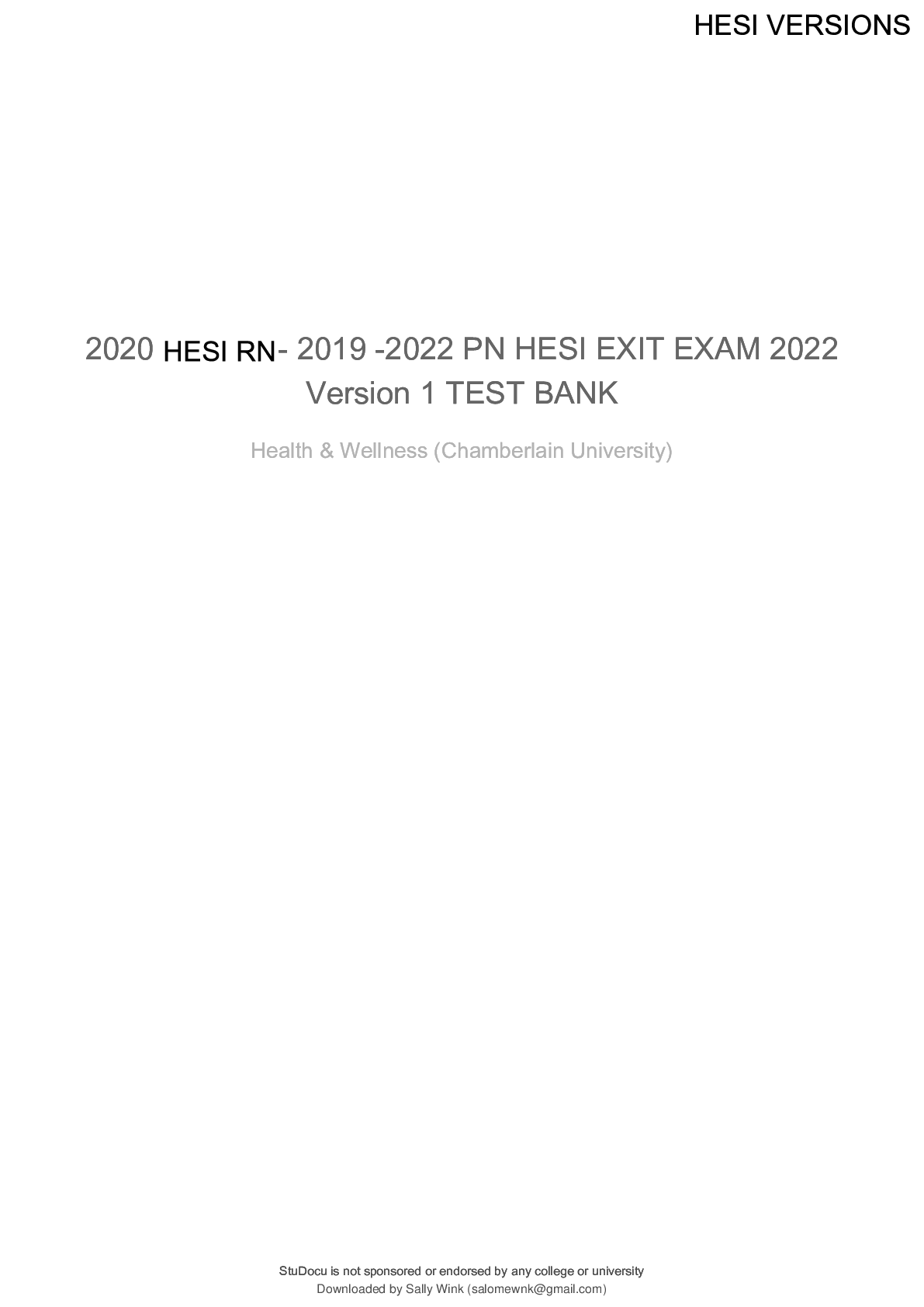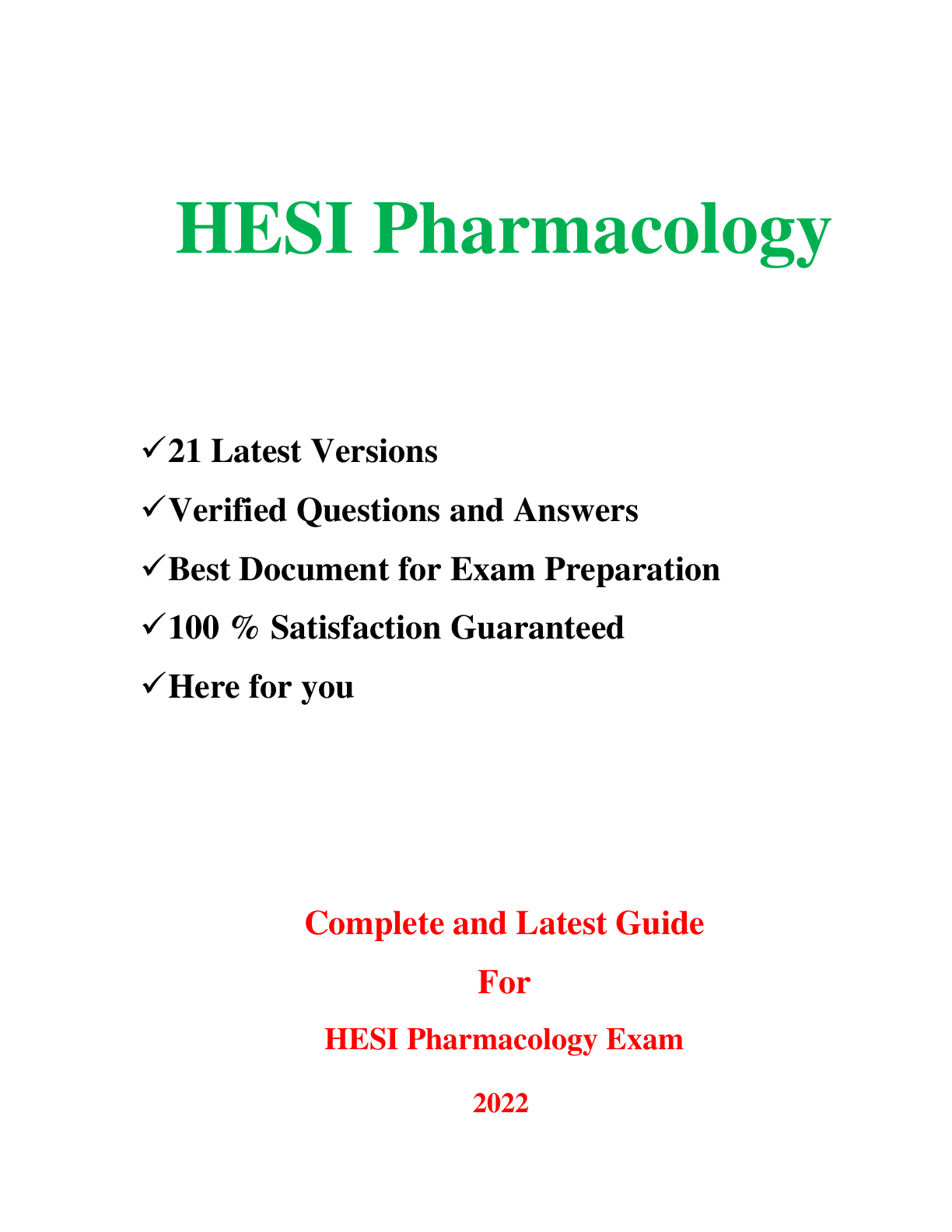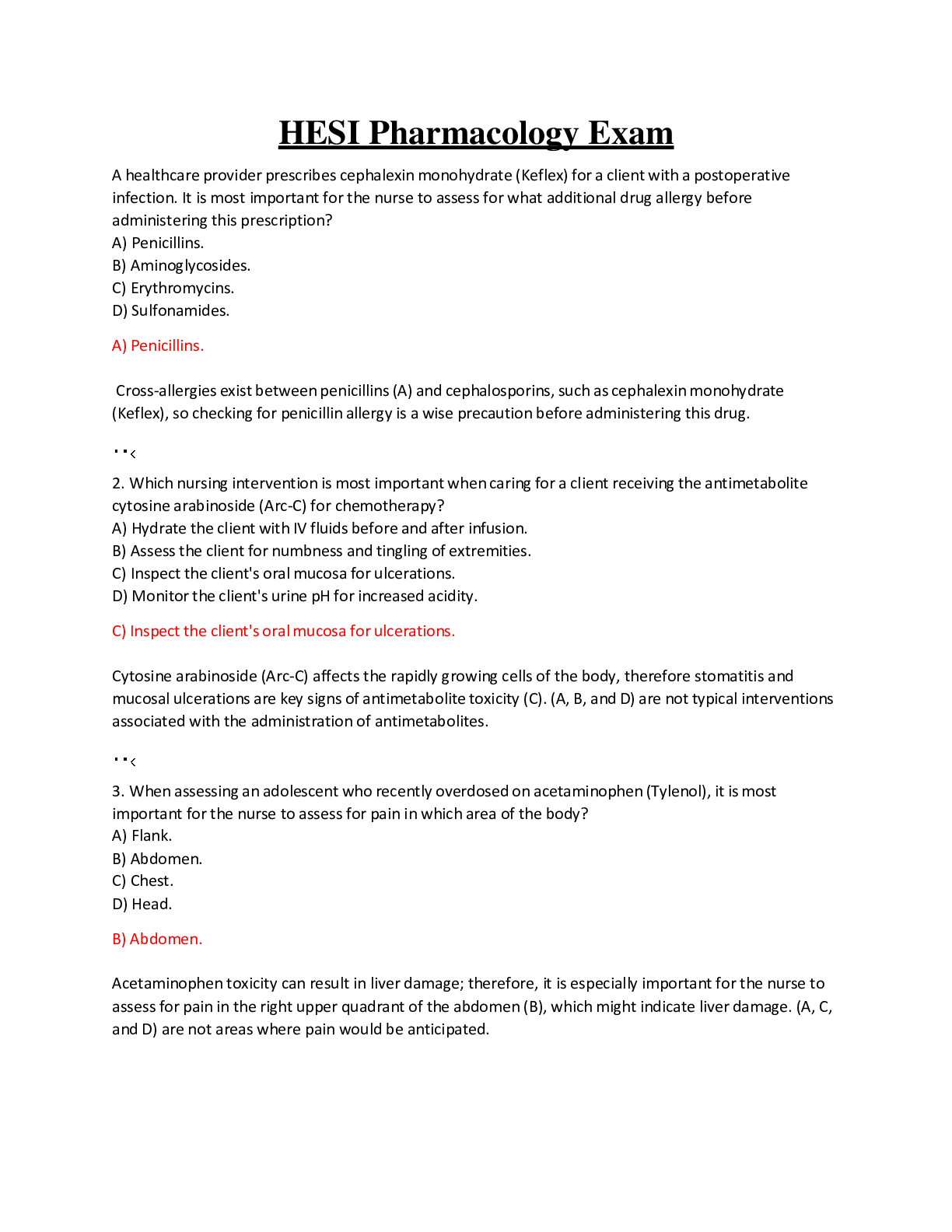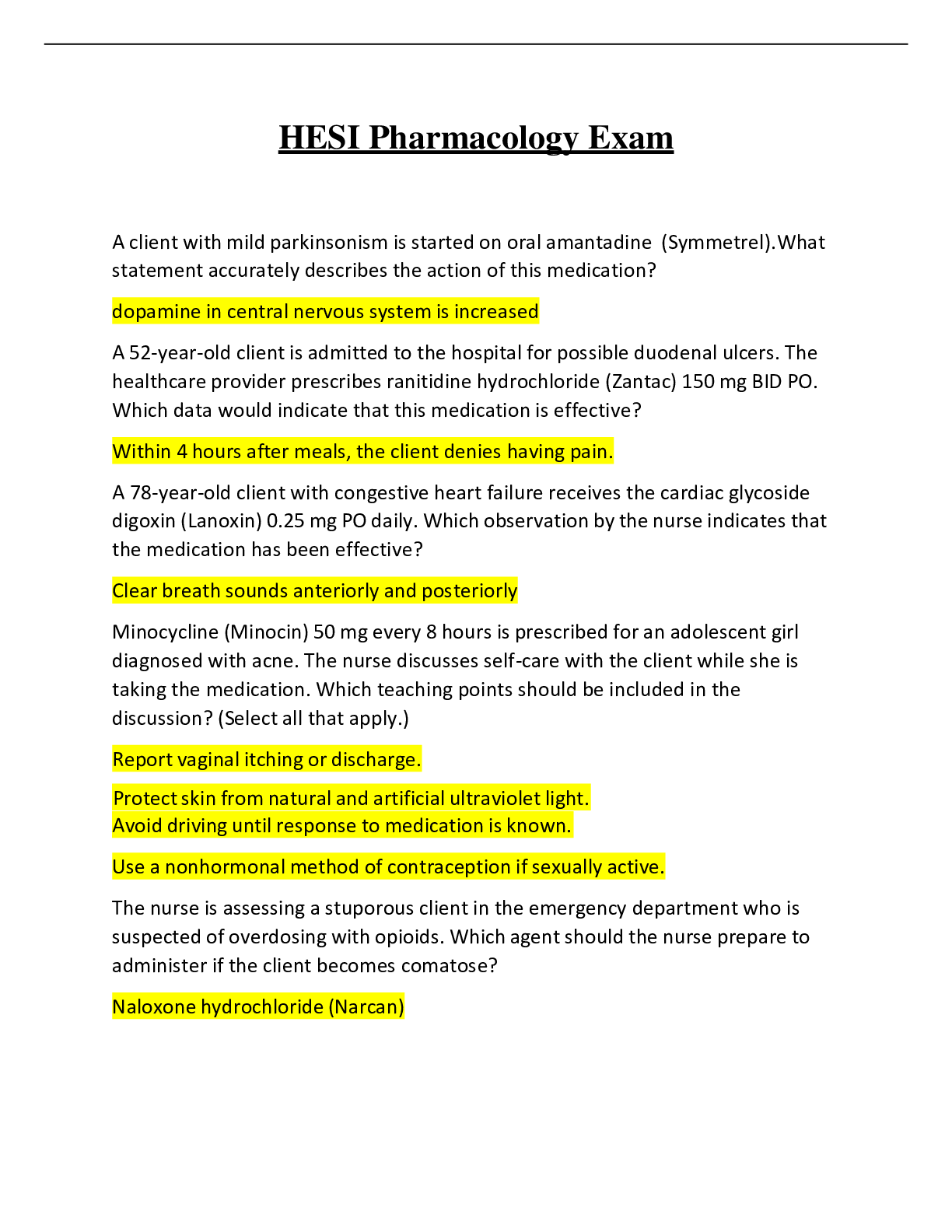Pharmacology > AQA Questions and Marking Scheme > HESI Pharmacology Version 1 Success (All)
HESI Pharmacology Version 1 Success
Document Content and Description Below
HESI Pharmacology Version 1 – Questions 1 through 100 1) A nurse is caring for a client with hyperparathyroidism and notes that the client's serum calcium level is 13 mg/dL. Which medication shou... ld the nurse prepare to administer as prescribed to the client? 1. Calcium chloride 2. Calcium gluconate 3. Calcitonin (Miacalcin) 4. Large doses of vitamin D 3. Calcitonin (Miacalcin) Rationale: The normal serum calcium level is 8.6 to 10.0 mg/dL. This client is experiencing hypercalcemia. Calcium gluconate and calcium chloride are medications used for the treatment of tetany, which occurs as a result of acute hypocalcemia. In hypercalcemia, large doses of vitamin D need to be avoided. Calcitonin, a thyroid hormone, decreases the plasma calcium level by inhibiting bone resorption and lowering the serum calcium concentration. 2.) Oral iron supplements are prescribed for a 6-year-old child with iron deficiency ane item? 1. Milk 2. Water 3. Apple juice 4. Orange juice 4. Orange juice Rationale: Vitamin C increases the absorption of iron by the body. The mother should be instructed to administer the medication with a citrus fruit or a juice that is high in vitamin C. Milk may affect absorption of the iron. Water will not assist in absorption. Orange juice contains a greater amount of vitamin C than apple juice. 3.) Salicylic acid is prescribed for a client with a diagnosis of psoriasis. The nurse monitors the client, knowing that which of the following would indicate the presence of systemic toxicity from thismedication? 1. Tinnitus 2. Diarrhea 3. Constipation 4. Decreased respirations 1. Tinnitus Rationale: mia. The nurse instructs the mother to administer the iron with which best food Salicylic acid is absorbed readily through the skin, and systemic toxicity (salicylism) can result. Symptoms include tinnitus, dizziness, hyperpnea, and psychological disturbances. Constipation and diarrhea are not associated with salicylism. 4.) The camp nurse asks the children preparing to swim in the lake if they have applied sunscreen. The nurse reminds the children that chemical sunscreens are most effective when applied: 1. Immediately before swimming 2. 15 minutes before exposure to thesun 3. Immediately before exposure to the sun 4. At least 30 minutes before exposure to the sun 4. At least 30 minutesbefore exposure to the sun Rationale: Sunscreens are most effective when applied at least 30 minutes before exposure to the sun so that they can penetrate the skin. All sunscreens should be reapplied after swimming or sweating. 5.) Mafenide acetate (Sulfamylon) is prescribed for the client with a burn injury. When applying the medication, the client complains of local discomfort and burning. Which of the following is the most appropriate nursing action? 1. Notifying the registered nurse 2. Discontinuing the medication 3. Informing the client that this is normal 4. Applying a thinner film than prescribed to the burn site 3. Informing the client that this is normal Rationale: Mafenide acetate is bacteriostatic for gram-negative and gram-positive organisms and is used to treat burns to reduce bacteria present in avascular tissues. The client should be informed that the medication will cause local discomfort and burning and that this is a normal reaction; therefore options 1, 2, and 4 are incorrect 6.) The burn client is receiving treatments of topical mafenide acetate (Sulfamylon) to the site of injury. The nurse monitors the client, knowing that which of the following indicates that a systemic effect has occurred? 1.Hyperventilation 2.Elevated blood pressure 3.Local pain at the burnsite 4.Local rash at the burn site 1.Hyperventilation Rationale: Mafenide acetate is a carbonic anhydrase inhibitor and can suppress renal excretion of acid, thereby causing acidosis. Clients receiving this treatment should be monitored for signs of an acid-base imbalance (hyperventilation). If this occurs, the medication should be discontinued for 1 to 2 days. Options 3 and 4 describe local rather than systemic effects. An elevated blood pressure may be expected from the pain that occurs with a burn injury. [Show More]
Last updated: 1 year ago
Preview 1 out of 41 pages
Instant download
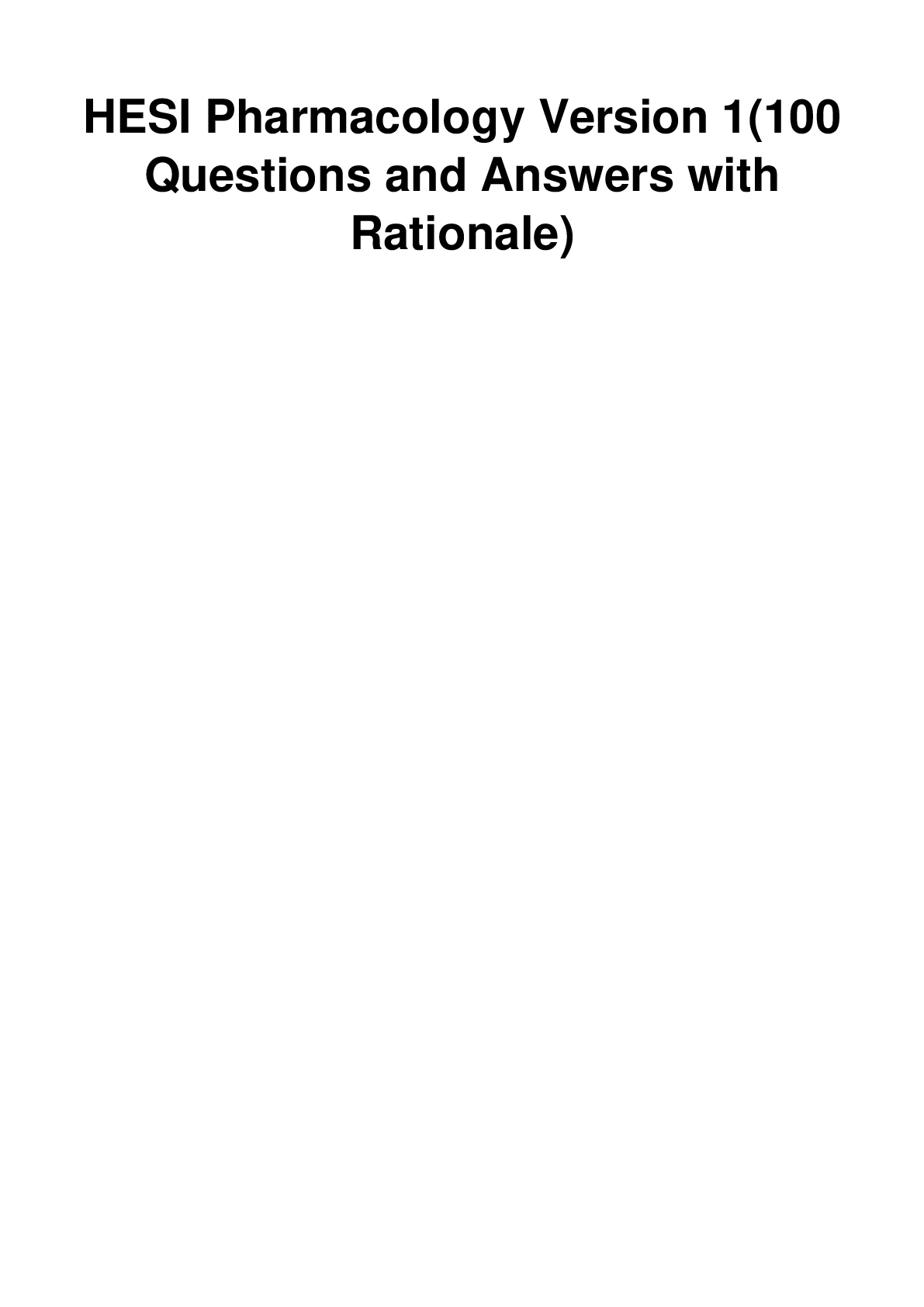
Buy this document to get the full access instantly
Instant Download Access after purchase
Add to cartInstant download
Reviews( 0 )
Document information
Connected school, study & course
About the document
Uploaded On
Sep 28, 2022
Number of pages
41
Written in
Additional information
This document has been written for:
Uploaded
Sep 28, 2022
Downloads
0
Views
99

